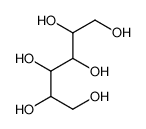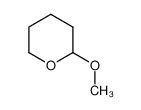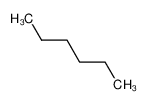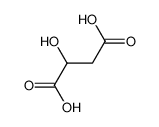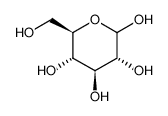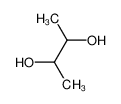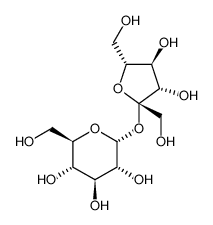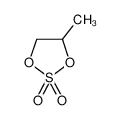1.Identification
1.1 GHS Product identifier
| Product name | propane-1,2-diol |
|---|
1.2 Other means of identification
| Product number | - |
|---|---|
| Other names | 1,2-Propanediol |
1.3 Recommended use of the chemical and restrictions on use
| Identified uses | For industry use only. Enzymes and Enzyme Stabilizers;Solvents |
|---|---|
| Uses advised against | no data available |
1.4 Supplier's details
| Company | MOLBASE (Shanghai) Biotechnology Co., Ltd. |
|---|---|
| Address | Floor 4 & 5, Building 12, No. 1001 North Qinzhou Road, Xuhui District, Shanghai, China |
| Telephone | +86(21)64956998 |
| Fax | +86(21)54365166 |
1.5 Emergency phone number
| Emergency phone number | +86-400-6021-666 |
|---|---|
| Service hours | Monday to Friday, 9am-5pm (Standard time zone: UTC/GMT +8 hours). |
2.Hazard identification
2.1 Classification of the substance or mixture
Not classified.
2.2 GHS label elements, including precautionary statements
| Pictogram(s) | No symbol. |
|---|---|
| Signal word | No signal word. |
| Hazard statement(s) | none |
| Precautionary statement(s) | |
| Prevention | none |
| Response | none |
| Storage | none |
| Disposal | none |
2.3 Other hazards which do not result in classification
none
3.Composition/information on ingredients
3.1 Substances
| Chemical name | Common names and synonyms | CAS number | EC number | Concentration |
|---|---|---|---|---|
| propane-1,2-diol | propane-1,2-diol | 57-55-6 | none | 100% |
4.First-aid measures
4.1 Description of necessary first-aid measures
General advice
Consult a physician. Show this safety data sheet to the doctor in attendance.
If inhaled
Fresh air, rest.
In case of skin contact
Remove contaminated clothes. Rinse skin with plenty of water or shower.
In case of eye contact
Rinse with plenty of water (remove contact lenses if easily possible).
If swallowed
Rinse mouth. Seek medical attention if you feel unwell.
4.2 Most important symptoms/effects, acute and delayed
Liquid may irritate eyes. (USCG, 1999)
4.3 Indication of immediate medical attention and special treatment needed, if necessary
Check the anion gap, arterial pH, renal function, and glucose level. Serum propylene glycol levels up to 1,000 mg/dL do not correlate well with clinical status. Patients have been conscious with serum levels of 760 mg/dL.
5.Fire-fighting measures
5.1 Extinguishing media
Suitable extinguishing media
Water fog, alcohol foam, carbon dioxide, dry chemical.
5.2 Specific hazards arising from the chemical
This chemical is combustible.
5.3 Special protective actions for fire-fighters
Wear self-contained breathing apparatus for firefighting if necessary.
6.Accidental release measures
6.1 Personal precautions, protective equipment and emergency procedures
Use personal protective equipment. Avoid dust formation. Avoid breathing vapours, mist or gas. Ensure adequate ventilation. Evacuate personnel to safe areas. Avoid breathing dust. For personal protection see section 8.
6.2 Environmental precautions
Absorb liquid in sand or inert absorbent. Then store and dispose of according to local regulations.
6.3 Methods and materials for containment and cleaning up
SRP: Wastewater from contaminant suppression, cleaning of protective clothing/equipment, or contaminated sites should be contained and evaluated for subject chemical or decomposition product concentrations. Concentrations shall be lower than applicable environmental discharge or disposal criteria. Alternatively, pretreatment and/or discharge to a permitted wastewater treatment facility is acceptable only after review by the governing authority and assurance that "pass through" violations will not occur. Due consideration shall be given to remediation worker exposure (inhalation, dermal and ingestion) as well as fate during treatment, transfer and disposal. If it is not practicable to manage the chemical in this fashion, it must be evaluated in accordance with EPA 40 CFR Part 261, specifically Subpart B, in order to determine the appropriate local, state and federal requirements for disposal.
7.Handling and storage
7.1 Precautions for safe handling
Avoid contact with skin and eyes. Avoid formation of dust and aerosols. Avoid exposure - obtain special instructions before use.Provide appropriate exhaust ventilation at places where dust is formed. For precautions see section 2.2.
7.2 Conditions for safe storage, including any incompatibilities
Separated from strong oxidants and alkalis. Dry. Well closed. Ventilation along the floor.Propylene glycol is hygroscopic and should be stored in a well-closed container, protected from light, in a cool, dry place.
8.Exposure controls/personal protection
8.1 Control parameters
Occupational Exposure limit values
no data available
Biological limit values
no data available
8.2 Appropriate engineering controls
Handle in accordance with good industrial hygiene and safety practice. Wash hands before breaks and at the end of workday.
8.3 Individual protection measures, such as personal protective equipment (PPE)
Eye/face protection
Safety glasses with side-shields conforming to EN166. Use equipment for eye protection tested and approved under appropriate government standards such as NIOSH (US) or EN 166(EU).
Skin protection
Wear impervious clothing. The type of protective equipment must be selected according to the concentration and amount of the dangerous substance at the specific workplace. Handle with gloves. Gloves must be inspected prior to use. Use proper glove removal technique(without touching glove's outer surface) to avoid skin contact with this product. Dispose of contaminated gloves after use in accordance with applicable laws and good laboratory practices. Wash and dry hands. The selected protective gloves have to satisfy the specifications of EU Directive 89/686/EEC and the standard EN 374 derived from it.
Respiratory protection
Wear dust mask when handling large quantities.
Thermal hazards
no data available
9.Physical and chemical properties
| Physical state | clear viscous liquid |
|---|---|
| Colour | Colorless viscous liquid |
| Odour | Practically odorless |
| Melting point/ freezing point | -59°C(lit.) |
| Boiling point or initial boiling point and boiling range | 187°C(lit.) |
| Flammability | Combustible. |
| Lower and upper explosion limit / flammability limit | Lower flammable limit: 2.6% by volume; Upper flammable limit: 12.5% by volume |
| Flash point | 103°C |
| Auto-ignition temperature | 415°C |
| Decomposition temperature | no data available |
| pH | no data available |
| Kinematic viscosity | 0.581 cP at 20°C |
| Solubility | greater than or equal to 100 mg/mL at 21.11°C |
| Partition coefficient n-octanol/water (log value) | no data available |
| Vapour pressure | 0.08 mm Hg at 20°C ; 0.13 mm Hg at 25°C |
| Density and/or relative density | 1.036g/mLat 25°C(lit.) |
| Relative vapour density | 2.62 (vs air) |
| Particle characteristics | no data available |
10.Stability and reactivity
10.1 Reactivity
no data available
10.2 Chemical stability
At cool temperatures, propylene glycol is stable in a well-closed container, but at high temperatures, in the open, it tends to oxidize, giving rise to products such as propionaldehyde, lactic acid, pyruvic acid, and acetic acid. Propylene glycol is chemically stable when mixed with ethanol (95%), glycerin, or water; aqueous solutions may be sterilized by autoclaving.
10.3 Possibility of hazardous reactions
Combustible liquid when exposed to heat or flame ...PROPYLENE GLYCOL is hygroscopic. It is sensitive to excessive heat (tends to oxidize at high temperatures). This compound can react with oxidizing materials. It is incompatible with acid chlorides, acid anhydrides, chloroformates, and reducing agents. It dissolves many essential oils. A mixture of this compound with hydrofluoric acid and silver nitrate was put in a glass bottle which burst 30 minutes later.
10.4 Conditions to avoid
no data available
10.5 Incompatible materials
Reacts with strong oxidants, causing fire hazard.
10.6 Hazardous decomposition products
When heated to decomposition it emits acrid smoke and irritating fumes.
11.Toxicological information
Acute toxicity
- Oral: LD50 Rat oral 21000 - 33700 mg/kg
- Inhalation: no data available
- Dermal: no data available
Skin corrosion/irritation
no data available
Serious eye damage/irritation
no data available
Respiratory or skin sensitization
no data available
Germ cell mutagenicity
no data available
Carcinogenicity
no data available
Reproductive toxicity
no data available
STOT-single exposure
no data available
STOT-repeated exposure
no data available
Aspiration hazard
no data available
12.Ecological information
12.1 Toxicity
- Toxicity to fish: LC50; Species: Lepomis macrochirus (Bluegill sunfish); Conditions: static; Concentration: > 10,000 ppm for 96 hr
- Toxicity to daphnia and other aquatic invertebrates: EC50; Species: Daphnia magna (Water flea, age 6-24 hr); Conditions: freshwater, static, 20°C, pH > or =7.0; Concentration: >10000000 ug/L for 24, 48 hr; Effect: intoxication, immobilization /formulation
- Toxicity to algae: no data available
- Toxicity to microorganisms: no data available
12.2 Persistence and degradability
AEROBIC: Propylene glycol achieved 64% of its theoretical BOD using a sewage inoculum and a 5 day incubation period(1). A Warburg respirometer study employing a sewage seed showed that propylene glycol reached 78% of its theoretical BOD during a 40 day incubation period(2). Propylene glycol achieved 2.2, 56.7 and 80% of its theoretical BOD using a sewage inoculum and 5, 10, and 50 day incubation periods, respectively(3). Using raw wastewater and synthetic seawater as inoculum, propylene glycol achieved 55 and 83% of its theoretical BOD during 5 and 20 day incubation periods, respectively(4). Using wastewater from pretreated domestic sewage, propylene glycol reached 74.5% of its theoretical BOD in 5 days(5). Propylene glycol underwent 73-78% mineralization within 51 days when incubated with various agricultural soils from Clemson University, SC under laboratory conditions at 22°C and 1,000 ppm propylene glycol in the soil; 40-79% mineralization was observed for propylene glycol incubated in the same soils for 64 days at 7°C(6).
12.3 Bioaccumulative potential
An estimated BCF of 3 was calculated for propylene glycol(SRC), using a log Kow of -0.92(1) and a regression-derived equation(2). According to a classification scheme(3), this BCF suggests the potential for bioconcentration in aquatic organisms is low(SRC).
12.4 Mobility in soil
The Koc of propylene glycol is estimated as 1(SRC), using a log Kow of -0.92(1) and a regression-derived equation(2). According to a classification scheme(3), this estimated Koc value suggests that propylene glycol is expected to have very high mobility in soil(SRC).
12.5 Other adverse effects
no data available
13.Disposal considerations
13.1 Disposal methods
Product
The material can be disposed of by removal to a licensed chemical destruction plant or by controlled incineration with flue gas scrubbing. Do not contaminate water, foodstuffs, feed or seed by storage or disposal. Do not discharge to sewer systems.
Contaminated packaging
Containers can be triply rinsed (or equivalent) and offered for recycling or reconditioning. Alternatively, the packaging can be punctured to make it unusable for other purposes and then be disposed of in a sanitary landfill. Controlled incineration with flue gas scrubbing is possible for combustible packaging materials.
14.Transport information
14.1 UN Number
| ADR/RID: Not dangerous goods. | IMDG: Not dangerous goods. | IATA: Not dangerous goods. |
14.2 UN Proper Shipping Name
| ADR/RID: unknown |
| IMDG: unknown |
| IATA: unknown |
14.3 Transport hazard class(es)
| ADR/RID: Not dangerous goods. | IMDG: Not dangerous goods. | IATA: Not dangerous goods. |
14.4 Packing group, if applicable
| ADR/RID: Not dangerous goods. | IMDG: Not dangerous goods. | IATA: Not dangerous goods. |
14.5 Environmental hazards
| ADR/RID: no | IMDG: no | IATA: no |
14.6 Special precautions for user
no data available
14.7 Transport in bulk according to Annex II of MARPOL 73/78 and the IBC Code
no data available
15.Regulatory information
15.1 Safety, health and environmental regulations specific for the product in question
| Chemical name | Common names and synonyms | CAS number | EC number |
|---|---|---|---|
| propane-1,2-diol | propane-1,2-diol | 57-55-6 | none |
| European Inventory of Existing Commercial Chemical Substances (EINECS) | Listed. | ||
| EC Inventory | Listed. | ||
| United States Toxic Substances Control Act (TSCA) Inventory | Listed. | ||
| China Catalog of Hazardous chemicals 2015 | Not Listed. | ||
| New Zealand Inventory of Chemicals (NZIoC) | Listed. | ||
| Philippines Inventory of Chemicals and Chemical Substances (PICCS) | Listed. | ||
| Vietnam National Chemical Inventory | Listed. | ||
| Chinese Chemical Inventory of Existing Chemical Substances (China IECSC) | Listed. | ||
16.Other information
Information on revision
| Creation Date | Aug 12, 2017 |
|---|---|
| Revision Date | Aug 12, 2017 |
Abbreviations and acronyms
- CAS: Chemical Abstracts Service
- ADR: European Agreement concerning the International Carriage of Dangerous Goods by Road
- RID: Regulation concerning the International Carriage of Dangerous Goods by Rail
- IMDG: International Maritime Dangerous Goods
- IATA: International Air Transportation Association
- TWA: Time Weighted Average
- STEL: Short term exposure limit
- LC50: Lethal Concentration 50%
- LD50: Lethal Dose 50%
- EC50: Effective Concentration 50%
References
- IPCS - The International Chemical Safety Cards (ICSC), website: http://www.ilo.org/dyn/icsc/showcard.home
- HSDB - Hazardous Substances Data Bank, website: https://toxnet.nlm.nih.gov/newtoxnet/hsdb.htm
- IARC - International Agency for Research on Cancer, website: http://www.iarc.fr/
- eChemPortal - The Global Portal to Information on Chemical Substances by OECD, website: http://www.echemportal.org/echemportal/index?pageID=0&request_locale=en
- CAMEO Chemicals, website: http://cameochemicals.noaa.gov/search/simple
- ChemIDplus, website: http://chem.sis.nlm.nih.gov/chemidplus/chemidlite.jsp
- ERG - Emergency Response Guidebook by U.S. Department of Transportation, website: http://www.phmsa.dot.gov/hazmat/library/erg
- Germany GESTIS-database on hazard substance, website: http://www.dguv.de/ifa/gestis/gestis-stoffdatenbank/index-2.jsp
- ECHA - European Chemicals Agency, website: https://echa.europa.eu/



